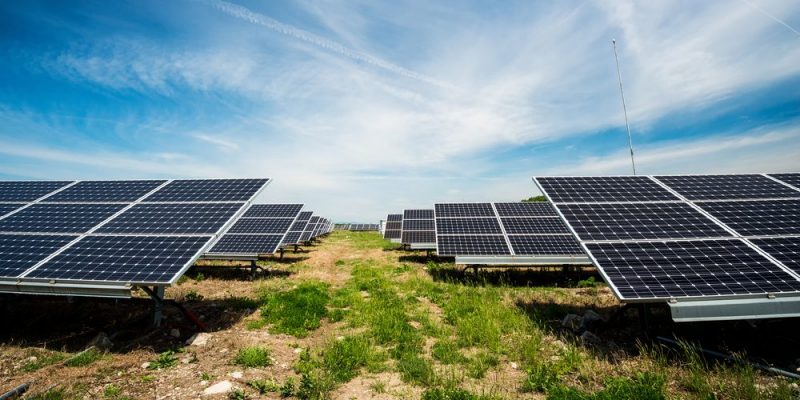We explain what renewable energies are, the importance they have and the types there are. Its advantages and non-renewable energies.

What are renewable energies?
When we talk about renewable energies or sustainable, we refer to those that can be used sustainably over time without risk (or with minimal risk) of being exhausted or extinct.
They generally refer to natural sources of energy capable of replenishment over time which is why they are also known as alternative energies or, in some cases, as green energies or ecological energies, as they may involve lower environmental impacts than traditional energy sources.
In the contemporary world, Humanity's energy demand is extremely high whether for industrial, commercial, transportation or basic sustenance purposes for homes.
Since the Industrial Revolution, when this growing demand began, different methods have been used to satisfy it, generally at the expense of the environment: pollution, destructive mining, slashing, burning, etc.
Renewable energies are safer in this sense, but generally less efficient and not always usable since they depend on the specific geography of the region. For example, wind energy requires large plains or windy coasts; the solar large tracts of land under the sun; and the hydroelectric large waterfalls.
Until now the known renewable energies are:
- Tidal energy That takes advantage of the movement of the tides.
- Solar energy Which collects thermal and light radiation from the Sun.
- Wind energy Which uses fields of turbines with blades like windmills to take advantage of the thrust of the wind.
- Hydroelectric energy That mobilizes turbines with the force of natural or artificial waterfalls.
- Geothermal energy Which takes advantage of the high temperature of the earth's subsoil to evaporate water and generate electricity or heat.
- Wave energy That takes advantage of the force of the waves on the sea coast.
- Biomass or biofuels Organic fuels developed from waste organic matter.
See also: Environmental conservation
Importance of renewable energies

In the face of the complicated climate panorama that the 21st century faces, renewable energies become vitally important in reducing the emission of CO2 and other gases greenhouse gases that pollute waters and the atmosphere, thus generating greater global warming.
Given that energy consumption cannot be limited in a hyper-technological and industrialized world, its sources could at least be replaced as far as possible by more environmentally safe ones.
However, There is no method of obtaining energy that is 100% safe for the environment and has no impact on it.
On the other hand, the depletion of fuel resources (coal, oil, uranium) would represent a long-term global economic problem, which would justify wars and cause humanitarian catastrophes, since goods are limited and scarce in the face of an increasingly growing world population. big.
Types of renewable energy
Renewable energies are classified into two types:
- Pollutants Energy sources such as biomass, biofuels or organic fuels are completely renewable but this does not make them more environmentally safe. In fact, the combustion process they undergo generates gases that are just as toxic and harmful to the atmosphere as traditional fossil fuels.
- Non-polluting Although its installation and operation generally has a minimum ecological impact, whether in the transformation of natural spaces, lake dams, etc., there are other forms of renewable energy whose exploitation does not systematically damage the environment, such as solar, wind, geothermal or tidal energy, since their basic phenomena (sun, wind, terrestrial heat, tides) would continue to occur, whether used by humans or not.
Advantages of renewable energies

The advantages of renewable energies are clear:
- They do not depend on a raw material whose market can fluctuate and make acquisition more expensive.
- They generally have less long-term environmental effect than traditional energies.
- They take advantage of resources that occur equally, whether they are used or not.
- They allow low-resource countries to obtain energy by taking advantage of their own geography instead of buying raw materials or, worse, electricity.
Non-renewable energies
On the contrary, there are numerous non-renewable energy sources, which take advantage of mineral and organic resources whose formation took thousands of years, such as oil, coal or uranium. Despite being very powerful and effective, these methods have their days numbered, since their raw materials are not generated at a fast enough rate.
Non-renewable energies are:
- Burning oil and other fossil fuels (coal, natural gas)
- Nuclear energy (especially the fission of the uranium atom)





